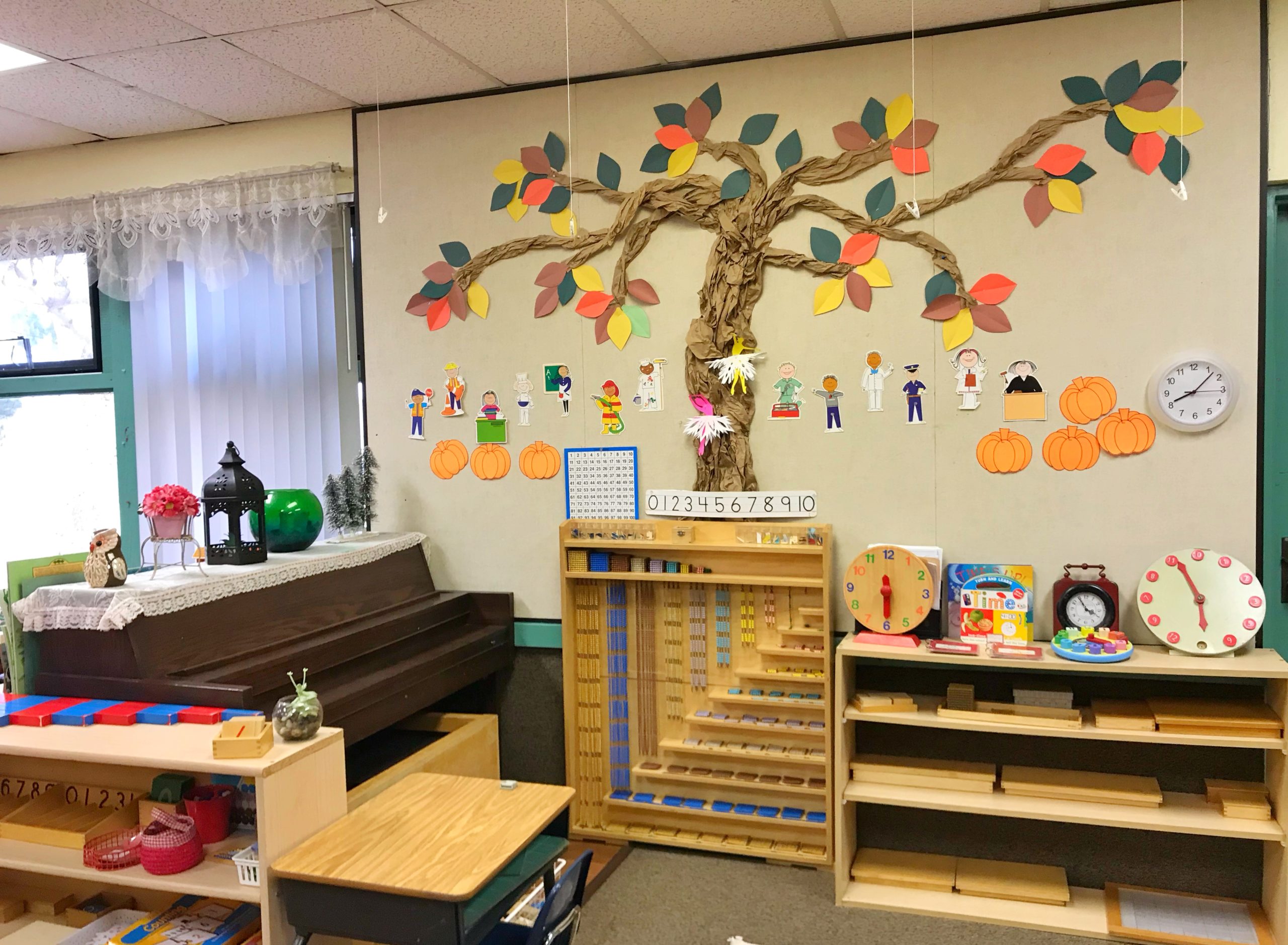
“The first aim of the prepared environment is as far as it is possible, to render the growing child independent of the adult.”
– Maria Montessori
An environment holds utmost importance in the developmental process of a child. Without a proper environment, a child may lack behind in many necessary skills that are requisite for life. Thus, the prepared environment in the Montessori method is the environment that can be designed to facilitate maximum independent learning and exploration of the skills by the child.
THE PREPARED ENVIRONMENT
In the prepared environment, there is a variety of activities which offer a great deal of movement to a child. The educators put great effort and intention into making sure the learning environment is organized in such a way that it supports children’s development and aids in their personal independence. The environment of a Montessori classroom has materials that allow children to develop gross and fine motor skills within the classroom.
THE MONTESSORI TEACHER
A Montessori teacher serves as the link between the child and the environment. A teacher becomes the preparer and communicator of the environment to the child, and is responsible for maintaining the atmosphere and order of the prepared environment. Thus, the environment is considered as one of the greatest teachers of the child when the adults prepare the environment for them sufficiently.
THE DYNAMIC ENVIRONMENT
The environment not only teaches the children, but the adults as well. As Montessori educators we keep moulding the environment according to the requirements of a child. If any of our students struggle in any way, we are more than ready to make the requisite changes in the environment to meet the current requirements of the child. These observations, insights, and adjustments are usually all a child needs to get back on track.
LEARNING WITH INDEPENDENCE
Children are able to work and learn independently. However, when learning and independence are combined, children gain a sense of working on their own which is very difficult to be taught otherwise. Thus, the prepared environment gives every child the freedom to fully develop their unique potential through developmentally appropriate sensorial materials. These materials range from simple to complex and from concrete to abstract, catering toward every child’s age and ability.
Children are not meant to sit in a chair for long periods of time and attend the long classes which get mundane for them. Their development and growth requires their growing bodies to be active. They should keep working with different Montessori materials which allows movement in the classrooms with independence.
Thus, the childcare facilities of Central Montessori School are purposefully designed with the child’s independence in mind. The classrooms we have are designed to empower children and give them opportunities for movement on an individual and independent basis.
THE ELEMENTS OF THE PREPARED ENVIRONMENTThe most important element of the prepared environment i.e a classroom is organized into five main areas:
Practical Life
Practical life skills is something that a child should start practicing at a young age. In this area of a classroom, a child learns to practice self-care, as well as care for the space and others. The practical life skills help children become independent with daily tasks and make them a responsible adult.
Sensorial
Montessori sensorial materials are materials used in the Montessori classroom. The primary purpose that these materials serve is the development and refinement of the different senses. They help a child develop and refine their five senses. These materials teach them to differentiate in size, shape, smell, sound and more. Overall, these materials refine their senses.
Math
Montessori maths helps in the development of concepts such as numeration, addition, subtraction etc. Math materials in a Montessori classroom help children to inculcate math with different learning aids. Using different concrete objects, the child gains an understanding of different concepts of Mathematics.
Language
Montessori classrooms incorporate both spoken and written language into the environment to further enrich this early learning. Language materials in a Montessori classroom are designed to aid children with the complexity of written and spoken language.It teaches children to share their ideas, thoughts, and feelings with others.
Cultural
Cultural Studies also introduces children to the physical world that surrounds them. Montessori cultural lessons bring children close to different people and their cultures.




